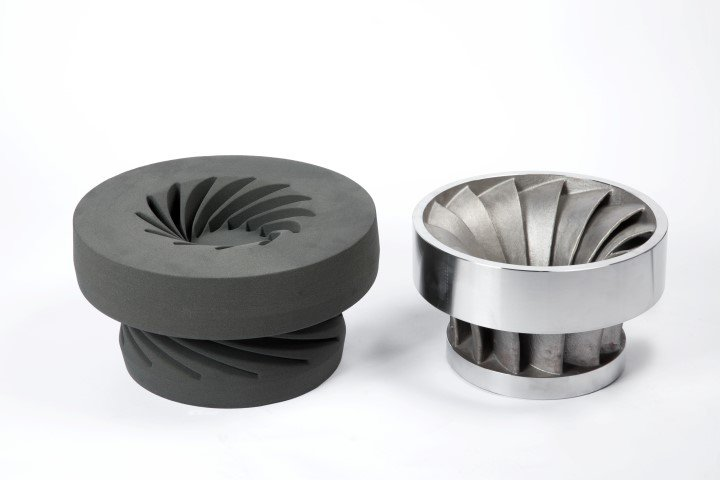
From its emergence in the mid-1990s, Binder Jetting has evolved into a key additive manufacturing technology with a variety of applications. From producing full-color parts and prototypes to low-cost metal parts and sand molds for casting, Binder Jetting has found a wide use case within a range of industries.
In this tutorial we’ll delve into how Binder Jetting works, its benefits and limitations and practical tips on how you can get the most out of this technology.
How does Binder Jetting work?
Binder Jetting technology works by using a print head to apply a liquid binding agent onto layers of powder:
- A thin layer of powder is distributed onto the build platform of the binder jetting machine.
- The inkjet print head then deposits the liquid binder agent (and dye if the object is being printed in full color) which bonds the powder particles together.
- When the layer is complete, the build platform is lowered and a new layer of powder is spread over the previous layer. The process is repeated until the part is completed, after which it is left to solidify and cool.
- Once the process is completed, the part is removed from the build platform and the excess powder cleaned off. Depending on the application, additional post-processing may also be required.
Why choose Binder Jetting?
- Due to its fast print speeds (Binder Jetting is typically faster than FDM, for example) and relatively low costs, Binder Jetting is a cost-effective choice for 3D printing. Additionally, a range of materials (in powder form) can be used, giving you the flexibility to create parts from materials like metals, ceramics and even sands. Indeed, the cost of metal binder jetting technology is significantly lower than metal 3D printing using DMLS technology.
- A significant advantage of Binder Jetting over other 3D printing technologies is that no additional heat is applied to the part (unlike FDM, SLS, DMLS processes) — so you don’t have to worry about distortions such as warping of the part.
- Similar to SLS, Binder Jetting requires no support structures because the part is surrounded by the unbound powder which works as a support structure. This also means that several parts can be printed in the same powder bed at once, ideal for low to medium batch production.
- The volume of the build platform of Binder Jetting machines are typically among the largest compared to other 3D printing technologies, making it ideal for printing large objects. Binder Jetting also allows you to produce parts in full color, and with complex designs.
Common applications and materials
Binder Jetting has a wide range of applications, including:
- Casting patterns
- Cores and molds
- Aerospace parts
- Prototypes
- Full-color decorative objects
- Jewellery
Binder Jetting is commonly applicable in such industries as aerospace and heavy industry, where thermally stable and wear-resistant parts are needed. Jewelry and decorative industries have also embraced Binder Jetting as a means of producing one-of-a-kind, custom-made objects. An unusual yet promising application of Binder Jetting may also lie in the food industry.
Materials that can be used with Binder Jetting include:
- Sandstone, silica sand for molds and cores
- Stainless steel, nickel based alloys, and tungsten carbide for low-cost metal parts and jewellery
- Ceramics and polymers for the full color decorative objects such as figurines
Limitations of Binder Jetting
Although there are a number of benefits to Binder Jetting technology, there are also some limitations that are worth considering:
- As a result of the process, parts produced with Binder Jetting technology may have limited mechanical properties, requiring additional post-processing to strengthen them.
- Additional post-processing can add much more time to the overall production process and “de-powdering” the finished part can be a time-consuming process.
- For metal Binder Jetting, it is important to keep in mind that the parts are produced in their green state. High porosity of these green parts makes them fragile and limits their mechanical properties. To overcome this, the part will require some form of post-processing such as curing, sintering or bronze infiltration that will help reduce internal porosity and enhance the strength and resistance of the part. This, however, inevitably adds time and cost to the overall process.
Tips
- Choose Binder Jetting to produce low-cost, complex metal parts that do not require very high mechanical properties
- Opt for Binder Jetting to print full-color objects suitable for decorative purposes
- Binder Jetting is ideal for producing large casting molds and cores